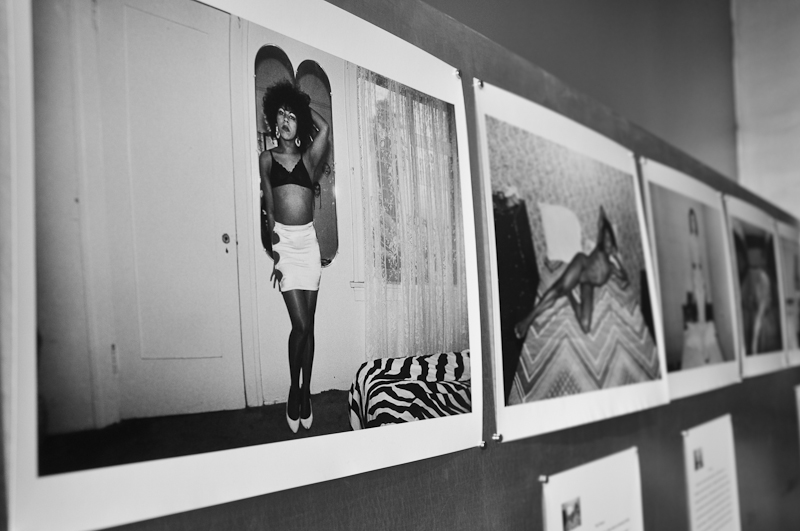
The walls of La Petite Mort Gallery are filled with an awful truth. The black-and-white photographs are unforgiving in their representation of the prostitutes of Southern California, whom Scot Sothern, the artist of the exhibit, photographed from 1986 to 1990.
The photographs are exposés, but they don’t just expose the women in them. They expose the artist behind the camera.
“I find it very vulnerable on both parts — his part and her part,” gallery owner Guy Bérubé said.
He chose to feature Sothern’s Lowlife as part of his photography month, but said he was unprepared by how he would be affected by these photographs.
“When I look at this artwork, it makes me feel a thousand emotions,” he said. “Sexuality is a strong issue but, at the same time, we all want to be turned on.”
“When you think of sexuality but you can’t be turned on, it’s such a confusion for us and that’s part of the aspect of showing this work, to create a chaos within ourselves.”
The exhibit features 15 photographs by Sothern, each one depicting a different prostitute he has visited.
But the pieces are completed by the text that accompanies each one. The words below the photos tell the story of the moment each shot was taken, what it took from the women and, surprisingly, what it took from Sothern.
“The text is very raw,” Bérubé said.. “The idea that he actually had sex with [these women], and that he’s descriptive and calls them whores is going to be difficult for some people.”
Sothern, from his home in Los Angeles, said that’s exactly what the exhibit is meant to do.
“These are not subtle photographs,” he said. “If the viewer isn’t already aware of how fucked up things are on the streets of America, and I believe most people do not see what is in front of them, then I want my photos to kick them in the gut. I want them to remember what they see.”
And the images are difficult to forget: the innocent prostitute, who refuses to take her clothes off for the photo shoot, contrasts with Sheba, the naked, exposed prostitute who can only be photographed with a bottle of booze to keep her steady.
Each woman Sothern chose to photograph is distinctly unique, from the way she poses for the camera to her reaction to getting photographed. Sothern isn’t just recording these women’s lives. He’s participating in their experiences.
Sothern admits that it wasn’t always this way for him. He said he started taking these photographs because he believed it was a way to get him on a gallery wall.
“After I started shooting and allowing myself to become a part of their stories I began to see the tragedy that was the lives of the sex workers on the street. That was when my real involvement began,” he said.
But he’s quick to admit that being aware was a far cry from being a “crusader”.
“I was still often a John, but I guess I was a John with empathy.”
And Bérubé seems to agree. He said he thinks there is more to Sothern’s photographs than a simple means to an end.
“You see his own discomfort,” he said. “A lot of people, when you do this type of work, they see that cliche of ‘you’re taking part of their soul away,’ but he’s also giving up a part of his soul by taking these images.”
This is Lowlife’s Canadian debut. It runs at La Petite Mort from Sept. 22 – Oct. 4.





